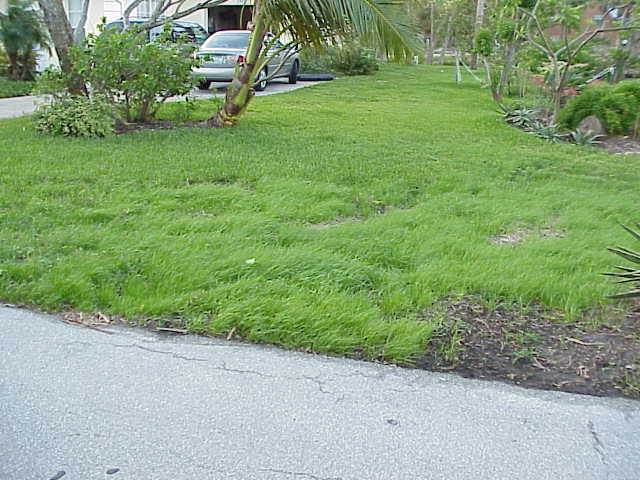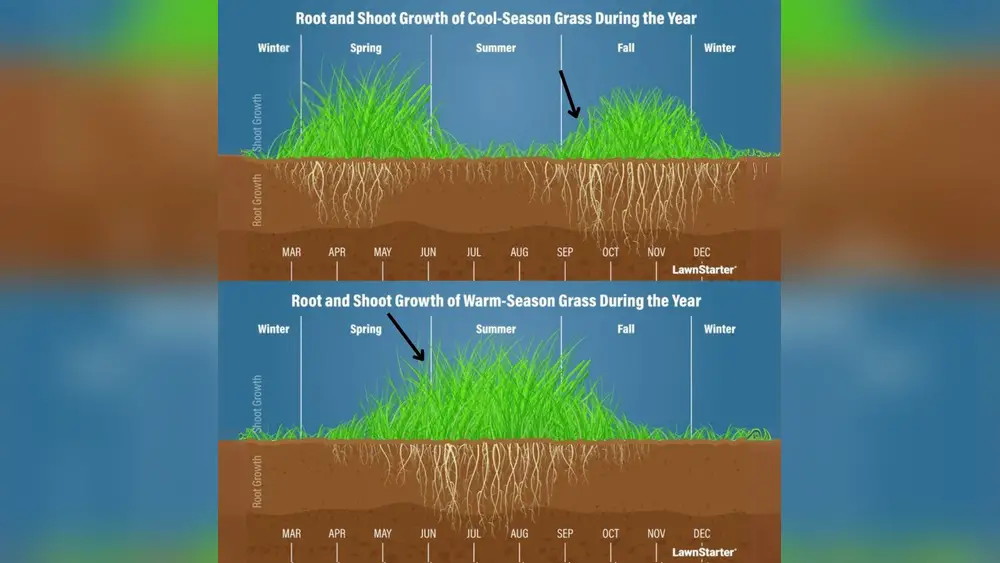Are you wondering when the best time to plant ryegrass in Florida is? Getting the timing right can make all the difference in growing a lush, green lawn that stands out.
Whether you want to overseed your existing grass or start fresh, knowing the ideal planting window helps ensure your ryegrass seeds sprout quickly and thrive in Florida’s unique climate. You’ll discover the perfect season to plant ryegrass, simple steps to prepare your lawn, and expert tips to boost germination and growth.
Keep reading to transform your yard into a vibrant, healthy space that you’ll love all year long!
Ryegrass Varieties For Florida
Choosing the right ryegrass variety helps your lawn thrive in Florida’s climate. Ryegrass types vary in growth habits and durability. Understanding these differences guides better planting choices. Your success depends on selecting a variety suited for Florida’s warm winters and mild summers.
Annual Vs Perennial Ryegrass
Annual ryegrass grows quickly but lives only one season. It provides fast green cover during cooler months. This type fades when temperatures rise in spring. Perennial ryegrass lasts longer and can survive several years. It handles wear better and recovers quickly from damage. In Florida, annual ryegrass suits temporary winter lawns. Perennial ryegrass works well for longer-lasting green spaces.
Choosing The Right Seed Type
Seed quality affects germination and lawn health. High-quality seeds sprout faster and grow uniformly. Certified seeds ensure purity and fewer weed seeds. Consider coated seeds for easier planting and better soil contact. Bulk seeds may save money but can vary in quality. Match seed type with your lawn goals and budget. Use fresh seeds for best results in Florida’s climate.
Ideal Planting Seasons
Choosing the right season to plant ryegrass in Florida is key for a healthy lawn. The climate in Florida affects how well ryegrass grows. Planting during the correct season helps the grass establish quickly and stay green longer. Let’s explore the best times to plant ryegrass for optimal growth and durability.
Understanding the ideal planting seasons allows you to avoid common problems like poor germination and heat stress. Timing your planting right ensures the grass can take full advantage of cooler temperatures and adequate moisture.
Best Time In Early Fall
Early fall is the top choice for planting ryegrass in Florida. During this time, temperatures start to cool down, creating perfect conditions for seed germination. The soil remains warm enough to encourage quick sprouting. Fall rains also help keep the soil moist without causing flooding. Planting now gives ryegrass a strong start before winter. This period reduces the risk of heat damage and drought stress.
Spring Planting Considerations
Spring can work for ryegrass planting but with caution. Temperatures rise quickly, which may stress new seedlings. Early spring planting is better than late spring to avoid hot weather. Watering is crucial to maintain soil moisture during this dry time. Ryegrass planted in spring may need extra care to survive the upcoming summer heat. Using shade and proper irrigation helps seedlings grow well.
Avoiding Summer Heat
Summer is the worst time to plant ryegrass in Florida. High temperatures cause seeds to dry out and fail to sprout. Heat also weakens young grass plants, making them prone to disease. Soil dries too fast, requiring constant watering to keep seeds alive. Planting in summer often leads to poor growth and wasted effort. It is best to wait until cooler seasons to achieve success with ryegrass.
Soil Preparation Tips
Proper soil preparation is key to growing healthy ryegrass in Florida. It helps seeds germinate faster and grow stronger. Preparing the soil correctly creates a perfect environment for ryegrass roots to establish. Follow these simple steps for best results.
Clearing Debris And Loosening Soil
Start by removing leaves, sticks, and old grass from the area. Clear debris to allow sunlight and water to reach the soil. Use a rake or dethatcher to loosen the soil surface. Loosening breaks compacted soil and improves air flow. This helps roots grow deep and strong.
Improving Seed-to-soil Contact
Good seed-to-soil contact is critical for ryegrass seeds to sprout. Lightly rake the soil after spreading seeds. This action pushes seeds closer to the soil. Avoid burying seeds too deep; just cover them with a thin soil layer. This allows seeds to get enough light and moisture.
Using Starter Fertilizers
Starter fertilizers provide essential nutrients for young ryegrass seedlings. Choose a fertilizer high in phosphorus to support root growth. Apply the fertilizer evenly before or after planting seeds. This boost helps seedlings establish faster and resist stress. Follow product instructions for proper use.

Credit: www.outsidepride.com
Seeding Techniques
Planting ryegrass in Florida requires careful seeding techniques. Proper methods help seeds grow strong and healthy. These techniques improve seed contact with soil and protect seeds during germination.
Follow simple steps for better results. Good preparation and care make ryegrass thrive in Florida’s climate.
Spreading Seed Evenly
Spread ryegrass seed evenly over the soil surface. Use a hand spreader or broadcast spreader. Avoid clumps or bare spots. Even spreading ensures uniform growth and a thick lawn.
Lightly Covering Seeds
Cover seeds with a thin layer of soil or mulch. About 1/4 inch deep is ideal. This protects seeds from birds and wind. It also keeps seeds warm and moist for better germination.
Watering For Germination
Water the seeded area gently but thoroughly. Keep the soil moist, not soaked. Water daily until seeds sprout. Proper watering helps roots grow strong and healthy.
Common Planting Mistakes
Planting ryegrass in Florida requires attention to detail. Many gardeners make simple mistakes that hurt growth. Avoid these errors to help your ryegrass thrive. Proper planting ensures strong roots and green, healthy lawns.
Throwing Seed Without Preparation
Throwing ryegrass seed directly on soil is a common error. Seeds need good contact with soil to sprout well. Just scattering seeds often leads to poor germination. Prepare the ground by clearing debris and loosening soil. Lightly rake the area before planting. This step improves seed-to-soil contact and boosts growth.
Overwatering And Seed Washout
Overwatering is another frequent mistake in ryegrass planting. Too much water can wash seeds away or drown them. Keep the soil moist but avoid puddles and flooding. Water gently and regularly to maintain the right moisture. Proper watering helps seeds germinate without being washed out.
Ignoring Soil Conditions
Ignoring soil quality causes planting failures. Ryegrass grows best in well-drained, fertile soil. Test soil pH and nutrient levels before planting. Amend soil with organic matter if needed. Poor soil slows seed growth and weakens grass. Healthy soil is the foundation for strong ryegrass.

Credit: www.pennington.com
Overseeding Existing Lawns
Overseeding existing lawns with ryegrass is a common practice in Florida. It helps keep lawns green and healthy during cooler months. Ryegrass grows quickly and provides a lush appearance. Proper overseeding improves lawn density and controls weeds. This process works best on warm-season grasses like Bermuda.
When To Overseed
The best time to overseed ryegrass in Florida is early fall. Temperatures start to cool down, which helps seed germinate. Planting too early or too late can reduce success. Aim for daytime temperatures between 60°F and 75°F. This timing allows ryegrass to grow before winter.
Preparing Bermuda Lawns
Prepare Bermuda lawns before overseeding for best results. Mow the lawn short to help seed reach soil. Remove debris and thatch using a rake or dethatcher. Lightly aerate the soil to improve seed contact. These steps increase seed germination and root growth.
Maintaining Moisture Levels
Keep soil moist after overseeding to help ryegrass sprout. Water lightly but often, about two to three times daily. Avoid overwatering to prevent seed washout or disease. Continue watering until seedlings are strong and established. Proper moisture is key for a healthy ryegrass lawn.
Managing Ryegrass Growth
Managing ryegrass growth in Florida requires careful attention to several key practices. Proper care ensures a healthy, green lawn throughout the cooler months. Understanding fertilization, pest control, and mowing routines can keep ryegrass thriving.
Fertilization Schedules
Ryegrass benefits from balanced fertilization. Apply nitrogen-rich fertilizer every 4 to 6 weeks. Early fall and late winter are important times for feeding. Avoid over-fertilizing, which can cause weak growth. Use slow-release fertilizers for steady nutrient supply. Always water after fertilizing to help nutrients reach roots.
Pest And Disease Control
Watch for common pests like armyworms and chinch bugs. Regularly inspect the lawn for damage or discoloration. Use insecticides only if pest levels become high. Prevent fungal diseases by avoiding excess moisture. Improve air circulation by thinning dense areas. Remove dead grass to reduce disease risk.
Mowing Best Practices
Keep ryegrass at 2 to 3 inches tall. Mow frequently to avoid cutting more than one-third of the blade. Use sharp mower blades for clean cuts. Leave clippings on the lawn to return nutrients. Reduce mowing frequency as temperatures rise in spring. Proper mowing encourages strong roots and thick turf.
Regional Considerations In Florida
Planting ryegrass in Florida requires careful attention to regional climate differences. The state’s size and diverse weather patterns affect seed growth and lawn success. Understanding these local factors helps in choosing the best planting time and care methods.
Ryegrass thrives in cooler temperatures but Florida’s warmth can create challenges. Farmers and gardeners must adapt planting schedules and techniques for their specific area.
South Florida Climate Challenges
South Florida has a tropical climate with hot, humid summers and mild winters. High humidity and frequent rain can cause fungal diseases in ryegrass. The intense summer heat stresses the grass and slows growth. Drought can also occur during dry spells despite the usual rainfall. These factors make ryegrass care tricky in this region.
Planting ryegrass too early may lead to poor germination due to heat. Late fall and winter offer cooler, more stable conditions. These months reduce disease risk and support stronger root development. Choosing the right seed variety that tolerates heat and humidity improves lawn health.
Adapting To Local Weather Patterns
Florida’s weather varies from north to south, so planting times differ. Northern areas experience cooler winters, allowing earlier ryegrass planting. Central and southern parts need later planting dates to avoid heat stress.
Water management is essential. Regular watering keeps soil moist without overwatering. Overwatering leads to seed rot and fungal problems. Monitoring rainfall and adjusting irrigation can save seeds and improve growth.
Using mulch or light soil covering protects seeds from erosion during heavy rains. This simple step keeps seeds in place and aids germination. Fertilizing before planting helps create a nutrient-rich environment for young ryegrass plants.

Credit: nwdistrict.ifas.ufl.edu
Frequently Asked Questions
When To Put Rye Grass Down In Florida?
Plant ryegrass in Florida during early fall for best germination and growth. Prepare soil, sow seed evenly, and keep moist.
Can I Plant Ryegrass In The Fall?
Yes, plant ryegrass in early fall for best growth. Prepare soil, spread seed evenly, and keep soil moist for germination.
Is October 1 Too Late To Plant Grass Seed?
October 1 is late but still possible for planting grass seed. Cool-season grasses like ryegrass perform best when sown early fall. Ensure soil preparation, keep the area moist, and use starter fertilizer for better germination and growth.
Can I Just Throw Rye Grass Seed Down?
You can throw ryegrass seed down, but success requires good seed-to-soil contact. Prepare soil, spread seed evenly, then lightly cover with soil or mulch. Keep the area moist for better germination and growth.
Conclusion
Plant ryegrass in Florida during early fall for best growth. Prepare soil by clearing debris and loosening it well. Spread seeds evenly and lightly cover with soil or mulch. Keep the area moist but avoid puddles to protect seeds. Use starter fertilizer to boost healthy development.
Following these steps helps ensure a green, thriving lawn. Timing and care make all the difference in ryegrass success. Start early, water regularly, and watch your lawn flourish.

